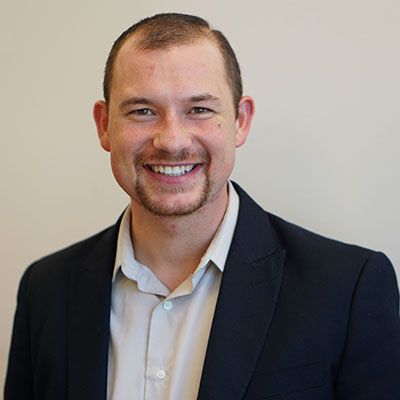In December I argued that learning pods and micro-schools would not disrupt schools, but that the phenomenon of disruption could be harnessed to advance student-centered learning through two other routes. My last post made the case for one route: teachers adopting new tools and practices. This post explores the other disruptive possibility for K-12 districts.
Last month we released an analysis of recent survey data that documents what K–12 instruction looks like during COVID-19. From that survey, two results point to trends that could become game changers for K–12 education: First, 32% of administrators said their school systems now offer learning hubs where students can get in-person support while schools are closed. Second, 69% report offering a “full-time district virtual school” (up from 27% pre-pandemic).
According to corroborating data from the American School District Panel, district leaders confirm that virtual schools aren’t just a trend likely to fade away once vaccination is widespread. What district leaders may not be considering, however, is how current stop-gap solutions are actually budding opportunities to catalyze long-term, system-wide change.
That’s because programs like these are seeds for disruption from within—opening up possibilities for sweeping change without upending established institutions of K–12 education. In general, most stories of disruption involve new entrants in the market siphoning away demand from established providers. But the history of disruptive innovation includes a few examples of established organizations like IBM, HP, and Charles Schwab that at one point effectively disrupted themselves by creating independent subunits and giving them a mission to come up with completely different resources, processes, and priorities for accomplishing their work.
Drawing on the “disrupt from within” playbook, school system leaders have an avenue to successfully launch, and eventually scale, transformative new approaches to student-centered learning. Hubs and virtual schools could, under the right conditions, be the footholds through which they start.
An autonomous unit
As my colleague Chelsea Waite and I argued last fall, established systems are hard to change. Hence the first principle of internal disruption: to succeed, potentially disruptive models must operate independently from the processes, priorities, and cost structures of their parent organizations.
Autonomy means more than just giving an existing school freedom from certain district policies and central-office decisions. Rather, it means launching a new program that can develop its own ways of working, unencumbered by the norms and assumptions of its parent organization.
District-created hubs and virtual schools present an opportunity for this kind of autonomy. They can still coordinate some of their work with established schools—for example, when hubs support students as they complete online coursework provided by an established school. But they need to have their own leadership, their own budgets, their own schedules, and flexibility from typical policies around things like seat time, teacher credentialing, and school calendars in order to invent their own approaches from the ground up.
Targeting nonconsumption with alternative benefits
Along with autonomy, new programs need to start off with a focus on unmet needs.
If a new program aims to provide learning opportunities that are already available elsewhere in the district, then students, families, and staff will expect it to be at least as good as existing alternatives. Under this pressure, the new program will tend to replicate the characteristics of the established programs that work as a way to enhance and extend well-known practices, but not disrupt them.
On the other hand, when a program starts off focused on providing benefits that are otherwise unavailable, it’s free from the pressure to conform to established models and practices. In Disruption Theory, these opportunities are called “areas of nonconsumption.” Nearly anything the new program offers to address nonconsumption will be better than the alternative of nothing at all.
The pandemic created nonconsumption when families lost access to services such as childcare, social communities, safety and stability, and a structured setting for learning. The virtual schools and hubs some school systems have launched are direct responses to this nonconsumption. The current widespread nonconsumption may evaporate sometime later this year when the pandemic ends and school buildings can once again operate at full capacity. But even after the pandemic is mitigated, there are pockets of nonconsumption in every school system that virtual schools and hubs should continue to serve, such as homeschool students, medically homebound students, students who work to help support their families, and dropouts.
Vision and drive
Even before the pandemic, many school systems already had solutions to serve nonconsumers, such as virtual schools, alternative schools, and credit recovery centers. Yet too often, their disruptive potential lies dormant because leaders see them as just niche alternatives for particular student groups, not as innovation incubators for transforming education throughout the district.
To put autonomous programs on a disruptive trajectory, school systems need to pick leaders for these programs who will relentlessly pursue better student-centered approaches for serving their students. Local leaders will know best the types of changes and improvements these programs will need. But improvements might include:
- Adopting or developing high-quality online learning materials that are good at supporting mastery-based, student-directed learning.
- Creating a robust mentorship program that ensures teachers effectively support students with self-directed learning.
- Creating in-person learning spaces where students can get support with their self-directed learning and where families can get child care.
- Developing pedagogy and partnerships that enrich learning with projects, internships, etc.
- Fostering a culture that emphasizes social learning experiences while respecting and supporting students’ agency, interests, and creativity.
The long-term goal in their sights should be to evolve their programs until they become attractive and scalable alternatives to conventional schooling for mainstream students. Their mark of success will be when both students and educators who currently prefer conventional schooling start opting to enroll and work in these alternative programs.
My last two posts were predictions for the future of K–12 education in 2021. This post, in contrast, is more of an opportunity than a prediction. In education, system-wide disruption is not a natural or inevitable phenomenon because it must be driven from within an existing school system. Many may not see a need for this kind of change or have the ambition to pursue it. But I hope that in a country of roughly 13,500 school districts, there are some bold and intrepid leaders out there who will seize the transformational opportunity that virtual schools and hubs offer and mark the way for others to follow. And if you know of leaders who are already doing this work, please put them in touch with me. I would love to learn about their journeys.


